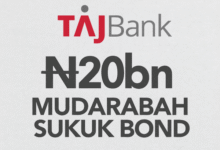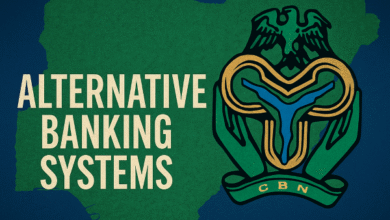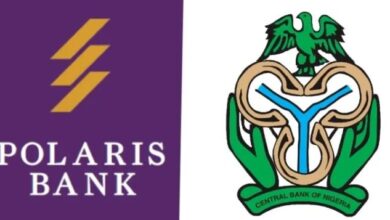CBN Records Low Patronage in Commercial Banks’ Borrowing
 The level of banks’ patronage of the Central Bank of Nigeria’s (CBN) window to borrow cash to boost their operations decreased in 2018, compared to the previous year, due to improved system liquidity.
The level of banks’ patronage of the Central Bank of Nigeria’s (CBN) window to borrow cash to boost their operations decreased in 2018, compared to the previous year, due to improved system liquidity.
However, the cost spent by the CBN on liquidity management in 2018, increased by 42.01 per cent to N2.114 trillion in 2018, up from the N1.489 trillion recorded in 2017.
The central bank disclosed these in its ‘Annual Activity Report for 2018,’ by its Financial Markets Department, a copy of which was posted on its website yesterday.
During the review period, banks accessed standing facilities to square-up their positions by borrowing at the Standing Lending Facility (SLF) or depositing excess funds at the Standing Deposit Facility (SDF) at the end of each business day.
According to the report, the trend at the discount window showed less frequent recourse to the SLF than in 2017 due to increased net system liquidity.
Meanwhile, the remunerable threshold for daily deposits per institution at the SDF remained N7.5 billion.
It said: “This was to curtail unbridled requests by market participants and encourage lending to the real economy. Applicable rates for the SLF and SDF also remained 16 and nine per cent, respectively, same as in 2017. The rates were anchored to the Monetary Policy Rate (MPR).
“The average daily request for SLF was N48.44 billion in 234 transaction days, out of which Intra-day Lending Facilities (ILF) conversion averaged N30.43 billion, amounting to 62.82 per cent of average daily requests.
“The average daily interest charged was N35.81 million.
“In 2017, the average daily request for SLF was N216.34 billion in 246 transaction days, out of which ILF conversion was N130.63 billion or 60.38 per cent, while average daily interest income stood at N159.96 million.”
According to the report, the reduction in patronage at the window in 2018 reflected the higher levels of injections into the banking system.
On the other hand, patronage at the SDF window increased to an average daily amount of N84.27 billion for the 246 transaction days in 2018, from N41.90 billion for the 230 transaction days in 2017. Similarly, the average daily interest payments on the deposits increased to N30.51 million in the review period, from N14.86 million in 2017.
The increased volume of transactions in the year was due to higher levels of banking system liquidity.
The report explained that the liquidity management was conducted through the use of open market operations (OMO) as the main instrument of monetary policy, complemented by discount window activities, cash reserve requirements (CRR) and interventions in the foreign exchange market.
According to the CBN, the total bills offered, subscribed and sold at the OMO auctions increased to N34.610 trillion, N24.916 trillion and N22.350 trillion in the year under review, compared with N13.763 trillion, N12.345 trillion and N11.347 trillion, respectively, in 2017.
It attributed the high level of activity during the review period to the increased number of auctions to moderate the excess banking system liquidity, occasioned by the payments of statutory revenue to the three tiers of government, other fiscal disbursements and maturing CBN Bills, among others.
“The total request for repo transactions in 2018 decreased by 12.65 per cent to N966.06 billion from N1,105.96 billion in 2017, while the applicable interest rates ranged from 18.50 to 19.50 per cent for the 4- to 90-day tenors, same as in the preceding year.
“Consequently, total interest earned on repo decreased by 27.87 per cent to N23.55 billion, from N32.65 billion in 2017. The reduced level of request in 2018 was due to increased net liquidity in the system,” the report added.
It pointed out that the challenge of curtailing inflation, promoting increased capital inflows and restoring the economy to the path of growth was paramount in the Bank’s policy mix.
The liquidity levels in the banking system were influenced by maturing CBN Bills, interest payments on maturing Bills and fiscal disbursements. The redemption of FGN Bonds and NTBs complemented the injections, the CBN added.
In order to mop up the excess liquidity, OMO auctions were conducted frequently, the CBN maintained.
Thus, the volume of auctions increased in November and December in response to various developments in the financial markets.
Source: ThisDay
Samson Oyedeyi











